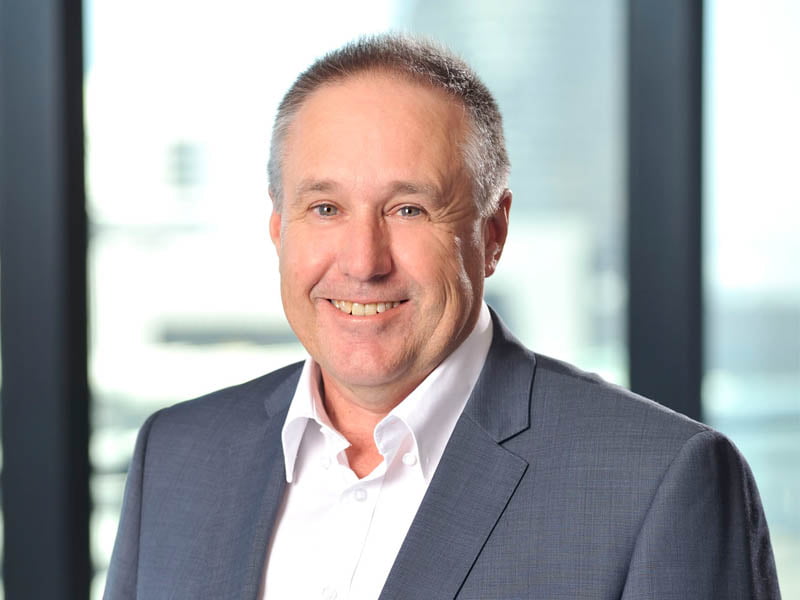The consumption-based IT procurement model adopted recently in Western Australia could be the way of the future as governments look to reduce tech spending, NEC Australia chief operating officer Mike Barber says.
NEC Australia is a high-profile player in Australian public sector IT tenders, and at the start of this year was selected as one of three vendors to drive the Western Australian state government’s digital transformation.
Rather than a traditional contract approach, the GovNext-ICT project in WA adopted a uniform consumption-based model, with all agencies able to control tech spends on an as-needed basis.

All state government agencies have signed up to the project, and can select from NEC Australia, Datacom and Atos for all IT services.
The state estimated that the new model could save between $65 million and $80 million annually. It is the first time that a consumption-based model has been employed by an Australian government, and if the experiment works, could lead the way for tech procurement locally, Mr Barber said.
“This will be a leader in the country. I know that a lot of government agencies are looking at this and saying, ‘you should be watching this and seeing how it goes because this could really help us going forward’,” Mr Barber told InnovationAus.com at NEC’s iExpo event in Japan last week.
“This is going to change the model. You’re not looking at offshoring as the only way to save a dollar, you can bring in the tools and automation to run it more efficiently, and it’s not as labour-intensive going forward.”
When announcing the contract with the three vendors, state development minister Bill Marmion said it would simplify the tech procurement process.
“We expect innovation to thrive under this arrangement through the stimulation of local industry, which in turn will ensure diversity of supply,” Mr Marmion said.
“The GovNext-ICT contract enables agencies to have access to the latest and greatest technological offerings to assist with improving their online service delivery presence,” he said.
“Suppliers will be delivering services locally using local and, in some cases, national providers.”
WA’s GovNext-ICT is a whole-of-government IT program operated from the Office of the Government Chief Information Officer, and aims to help state government agencies with the digital transformation of IT services.
The multi-year contract with the three tech giants includes data centres, co-location services, private cloud services, public cloud integration network and communications services, identity management and ICT operation.
“All the providers in Western Australia have to come through one of three vendors now for all the infrastructure services and we have to be able to build them on a unit basis,” Mr Barber said.
“They can see what they use and they can do something about it, which they’ve never had before,” he said.
“It’s an umbrella agreement. A whole-of-government approach which is the first that I’ve seen in the country.”
It aims to ensure that agencies only purchase IT services that they actually need, following a series of recent bungles.
It was revealed last year that the WA health department had spent more than $40 million on IT services it didn’t need, through a series of deals with Japanese tech company Fujitsu.
The new consumption model will help to avoid this happening again in the future, Mr Barber said.
“They’re really hoping that by having that information in front of them they can look at it and go, ‘we can do something about it, we can stop that or drop that down, or why did we buy all of that when we’re not using it?’,” he said.
“Governments find it really hard to understand what they’re paying for. [With the new model] every time they consume some computing power or get some storage, then it’s charged by the unit. If they want to back off on that they can, they can reduce it the next day if they want to.”
With governments increasing look to drive internal digital transformation while also trying to reduce costs, this new consumption-based model will soon become the norm, he said.
“Governments are trying to work on a pretty small budget that’s forever shrinking. They never get injected with millions of dollars to just go and do something.
“They’ve got to find ways to still serve the public but at a lower cost, and bring in as much IT as they can to do it. It’s always that more for less approach, and that makes it really tough,” Mr Barber said.
“We have to find ways where we can do something more efficiently. The more we can actually do in that government space, then the more customers or common processes we have there and the more efficient you can be.”
NEC Australia is a prominent tech supplier regularly competing for government tenders across the country. Mr Barber said his company is selected regularly because of its proven track record and ability to create local jobs.
“We’re not going to let the data go offshore, we’ve stood by that. Sometimes that can be at our expense, but we have stood by that for the last few years. We keep it on shore and we create jobs,” he said.
“I don’t think you could ever go and put a tender in and just hope for the best – they’ll ring up who we’re servicing at the moment and ask how we’re going. That’s how we’ll win the business. If we get one bad wrap from just one customer, that’s it. That will make it very hard.”
InnovationAus.com travelled to Japan as a guest of NEC Australia.
Do you know more? Contact James Riley via Email.

